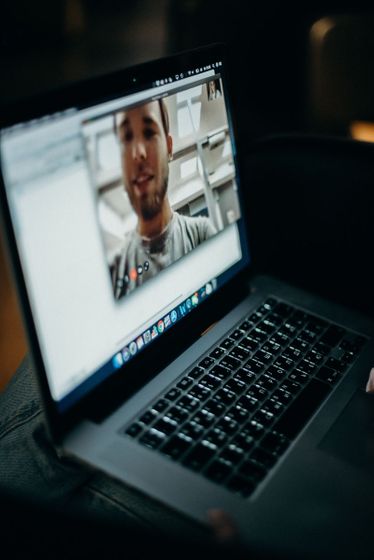Video conferencing provokes 'fight or flight or reaction' and is more burdensome than face-to-face communication

Companies that have introduced telecommuting due to the pandemic of the new coronavirus are increasingly using video conferencing tools such as Zoom. However, complaints such as 'video conferencing is more tiring than face-to-face meetings' have been raised since the early days of the pandemic, and Professor
Nonverbal overload: A theoretical argument for the causes of Zoom fatigue ・ Volume 2, Issue 1
https://tmb.apaopen.org/pub/nonverbal-overload/release/1
New Stanford study says Zoom calls trigger our'fight or flight' survival reflex | The Hill
https://thehill.com/changing-america/well-being/mental-health/542186-new-stanford-study-says-zoom-calls-trigger-our
◆ 1: Line of sight from a short distance
In general, face-to-face meetings are held a few meters away from each other, and the other person's face is not at a distance of tens of centimeters from your own face. However, in the Zoom conference, the image near the face taken by a camera such as a PC is displayed on the screen in a large size, so the other party's line of sight can be felt from a very short distance.
Of course, it's okay to stare at a close distance if you're a family member or lover, but if you're talking to a colleague or boss at work, a distance of tens of centimeters is too short. For example, when strangers get on an elevator that is tens of centimeters apart, passengers look away from each other without looking at each other, which makes it uncomfortable to look at the faces of unfamiliar people at close range. Because.
'The brain pays a lot of attention to the face, and when you see a big face, we react to'fight or flight or reaction ',' Bailenson said. 'From an evolutionary point of view, it's close to you. If you have a very large human face and that face is staring at you, you may engage in fighting or mating. Neither response is appropriate for a work meeting. '

◆ 2: Increased cognitive load
Bailenson points out that video conferencing puts more cognitive load on the brain than face-to-face meetings. In the case of video conferencing, it is necessary to consciously perform actions such as 'nodding' and 'attempting eye contact' that you would casually do in a face-to-face manner so that they are within the angle of view of the camera. In addition, the person you are talking to is not looking directly at you, but looking at you and the members of the meeting on the PC screen, so eye contact does not go well or you misread the intention of the other person's line of sight. It is said that things will increase.

◆ 3: The burden of keeping looking at your face
In everyday life, you only see your face when you stand in front of a mirror or take a selfie, but in video conferencing, you may see your face on the edge of the screen. Keeping an eye on your face can lead to stress, unconscious self-criticism, and even negative effects on your psyche.
◆ 4: Physical inconvenience
There is a limit to the angle of view of the camera, so people attending video conferencing should try to stay within that range. In general, you'll stay in a chair during a video conference, and if you keep your face as close to the camera as possible, you'll barely be able to move. This point is also stressful for people.
In a face-to-face meeting, there are surprisingly many opportunities to move back and forth on a chair, turn sideways, stand up and drink water from the water server, and write something on the whiteboard. However, Bailenson argues that video conferencing has high psychological hurdles to make such movements, making it difficult to make a slight change.

While video conferencing has many stress-prone factors, there are many benefits to video conferencing, and Bailenson believes that even if COVID-19 ends, video conferencing will not go away. .. Therefore, in order for people to have a more comfortable video conference, Mr. Bailenson said, 'Instead of displaying the other party's face on the entire screen, it is reduced to about one-third the size and displayed.' We recommended that you take measures such as 'don't worry too much' and 'hide your face'.
Related Posts:
in Note, Posted by log1h_ik






